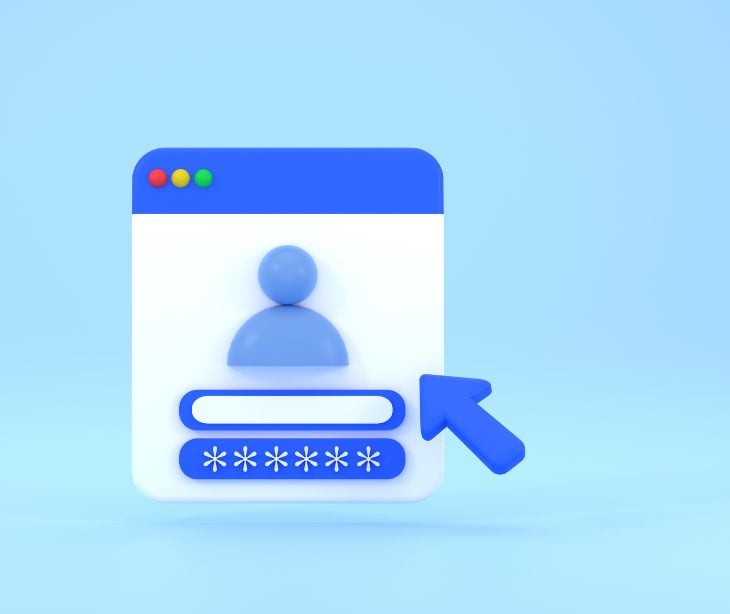
Adaptive authentication is a cutting-edge approach to user authentication that considers the risk level associated with a login attempt. This process, also known as risk-based authentication or context-based authentication, aims to strike a balance between user experience and security.
According to Silverfort, “In the healthcare industry, adaptive authentication plays a crucial role in protecting sensitive patient information. With the rise of telemedicine and remote patient monitoring, it's essential to ensure that only authorized personnel can access electronic health records (EHRs).”
The importance of multi-factor authentication
Multi-factor authentication (MFA) involves using multiple authentication methods to verify a user's identity. In the context of adaptive authentication, MFA provides additional layers of security for high-risk login attempts. The first authentication method, which usually presents the least friction for users, assesses the risk level. If the risk is low, the login is granted. However, if the risk is high, step-up authentication is triggered, requiring the user to provide additional authentication credentials.
Go deeper:
The functionality of adaptive authentication
When implementing adaptive authentication, it's necessary to define the parameters that users must meet when logging into the system. As users attempt to gain access, they are assigned a risk factor score based on various factors such as their login credentials and behavior.
These risk factor scores determine the level of authentication required for each user. Low-risk login attempts may only require a username and password. In contrast, high-risk attempts may trigger additional authentication methods such as face recognition, one-time passwords (OTPs) via email or SMS, or push notifications.
The authentication process is followed by the authorization step, where the system determines whether access should be granted or denied or if additional information is required through step-up authentication. This two-step process ensures that legitimate users can access their accounts easily while providing security measures to protect against unauthorized access.
Related: What’s the difference between 2FA and MFA?
Adaptive authentication for enhanced security
Adaptive multi-factor authentication (MFA) allows organizations to deploy the appropriate authentication factors based on a user's behavior and risk profile. An adaptive MFA system can select the most suitable authentication tools for each situation by evaluating the user's profile and behavior.
This approach reduces the burden on users by only requiring multi-factor authentication when access requests seem malicious or high-risk. Adaptive MFA solutions consider contextual factors such as device profile, user behavior and role analysis, location intelligence, source IP address, and third-party risk intelligence data to determine the threat level and pair it with the appropriate authentication requirements.
Examples of adaptive authentication methods
There are several methods available for implementing adaptive authentication. These methods involve continuously monitoring and analyzing user login credentials and behavior to identify anomalies that may indicate a potential risk. Some methods include:
User location
One standard method is analyzing the user's location, which can be determined by factors such as IP address, GPS, or a combination of WiFi, cellular, and GPS signals. If the location of the user attempting to log in does not match their usual location behavior pattern, step-up authentication is triggered, such as through an authenticator app or face recognition.
Device detection
Another scenario involves detecting a new device at login. If a user attempts to log in from a device that is not recognized or from a location that does not match their usual behavior pattern, additional authentication methods, such as a mobile push notification or an authenticator app, may be required. These are just a few examples of the various combinations of authentication methods that can be used in adaptive authentication.
Read also: Encryption in healthcare: The basics
Benefits of adaptive authentication solutions
Adaptive risk-based authentication offers several benefits for both organizations and users:
Frictionless authentication
Adaptive authentication reduces the need for heavy-handed authentication methods for low-risk activities, making the login process smoother for legitimate users while maintaining security measures.
Comprehensive security
Adaptive authentication provides a dynamic security layer that adjusts to risks and user habits.
Flexible access
Adaptive authentication enables flexible and secure access for customers, partners, and employees, regardless of location, by dynamically adjusting authentication requirements based on risk levels.
Reduced authentication processes
Adaptive authentication only triggers elevated-risk situations, avoiding unnecessary long authentication processes for low-risk activities, and providing a seamless user experience.
Differentiated access requirements
Adaptive authentication sets low entry barriers for non-sensitive information access while implementing high-security adaptive multi-factor authentication for sensitive gateways, ensuring appropriate security levels for different types of access.
Easier deployment and maintenance
Adaptive authentication solutions simplify deployment and maintenance for IT staff by limiting identity challenges and differentiating between mobile devices and their specific security vulnerabilities.
FAQs
What is adaptive authentication and how does it relate to healthcare security?
Adaptive authentication is a security process that dynamically adjusts the level of authentication required based on contextual factors, such as user behavior, location, and device. In healthcare, adaptive authentication helps protect sensitive systems and data, including protected health information (PHI), by providing a flexible and advanced security mechanism that responds to potential risks in real-time.
Why is adaptive authentication beneficial for HIPAA compliance in healthcare settings?
Adaptive authentication is beneficial for HIPAA compliance because it enhances the security of ePHI by providing an additional layer of protection. By dynamically adjusting authentication requirements based on risk factors, it helps prevent unauthorized access to sensitive information, ensuring that healthcare organizations meet HIPAA’s security standards for protecting PHI.
What are the potential risks associated with not using adaptive authentication under HIPAA?
- Increased likelihood of data breaches: Without adaptive measures, static authentication methods may be insufficient to prevent unauthorized access to ePHI.
- Non-compliance penalties: Failing to implement adequate security measures can result in fines and legal consequences under HIPAA.
- Financial losses: Costs related to breach remediation, legal fees, and potential settlements with affected individuals.
- Reputational damage: Loss of trust from patients, partners, and the public due to the organization’s failure to secure sensitive information.
- Operational impact: Increased risk of disruptions to healthcare services and administrative functions due to compromised data security.
Subscribe to Paubox Weekly
Every Friday we'll bring you the most important news from Paubox. Our aim is to make you smarter, faster.




